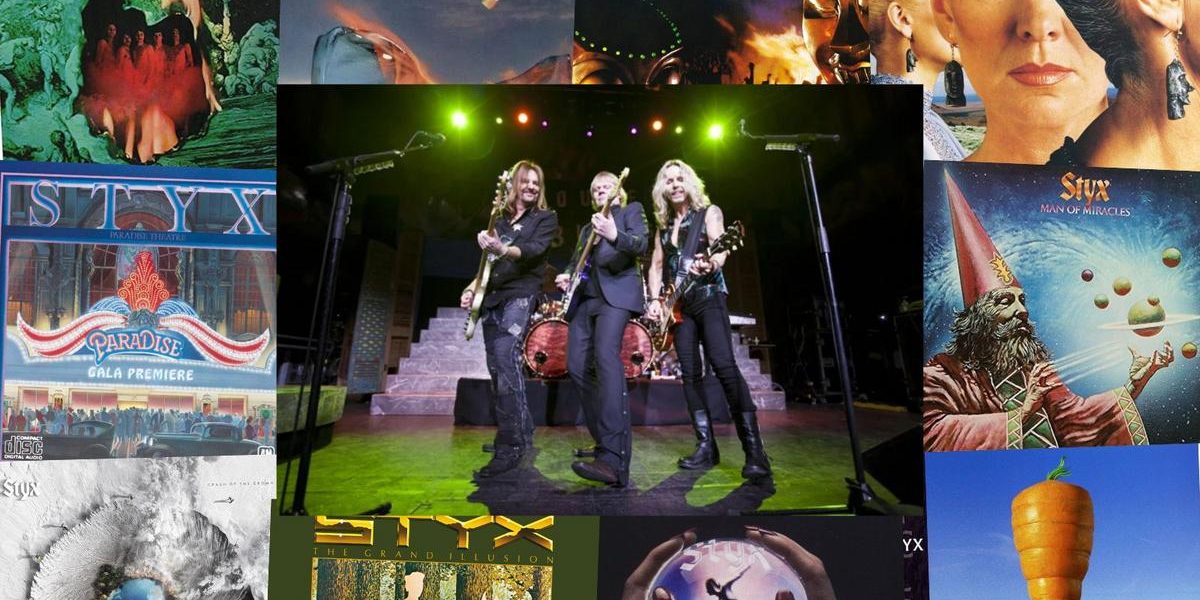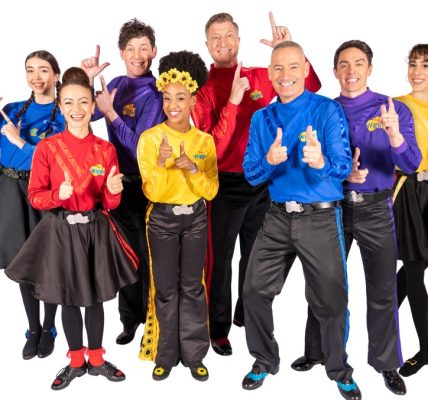Styx has been captivating audiences since 1972, which gives them ample experience in curating an engaging set list. According to Tommy Shaw, in an interview with AXS TV in 2024, the band members approach their selections with a fan’s perspective: “We’re fans ourselves. It’s like, what would we want to hear? Or what would we be okay with?” This artist-centric mindset allows them to resonate with their audience while also exploring the depth of their extensive discography.
Additionally, Shaw and his bandmates are consistently seeking to incorporate deeper cuts into their live performances, alongside newer material that the band wishes to showcase. “For one thing, it shows you that you’re not just stuck in the past,” Shaw elaborated, emphasizing the importance of evolving artistry, “that you’re still alive and, you know, a prescient human being who’s still got more music in them.”
As of April 2025, Styx remains vibrant and actively engaged with numerous touring plans for the year. Out of curiosity, we analyzed historical performance data from setlist.fm to uncover the most and least-played songs from each Styx album. It’s noteworthy that some songs have never graced the live stage—never played, even once. Therefore, this analysis focuses only on tracks that have made it to the set list at some point. We also excluded performances from solo shows by Styx members, limiting our findings to official Styx band performances.
Album: Styx (1972)
Most-played: “Best Thing”
Least-played: “Right Away”
To provide a fair assessment, Styx’s debut album, released in 1972, is not particularly their most cohesive work. It contains a variety of eclectic covers, many of which were suggested by their label. Consequently, it’s understandable that this isn’t an album the band frequently revisits. The most-played track, “Best Thing,” has been performed 11 times, primarily during the early ’70s, while “Right Away” made a single appearance in 1972.
Album: Styx II (1973)
Most-played: “Lady”
Least-played: “Little Fugue in G”
With their second album, Styx ventured deeper into original songwriting, featuring only one cover—a classical instrumental titled “Little Fugue in G,” originally composed by Johann Sebastian Bach. It’s logical, then, that this track is the least-played, having seen only one performance at a high school in Wheeling, Illinois, in 1973. Conversely, the sleeper hit “Lady” has accumulated an impressive 1,473 performances and is still a staple in current set lists.
Album: The Serpent Is Rising (1973)
Most-played: “22 Years”
Least-played: Four-way tie between “Krakatoa,” “Plexiglas Toilet,” “The Grove of Eglantine,” and “Winner Take All”
Just three months after the release of Styx II, The Serpent Is Rising hit the shelves, but unfortunately, it was a commercial disappointment. As a result, its songs have rarely graced set lists. In fact, there’s a four-way tie for the least-played tracks: “Krakatoa,” “Plexiglas Toilet,” “The Grove of Eglantine,” and “Winner Take All,” each performed exactly once. Even the most-played song, “22 Years,” has only been performed 14 times, all occurring in the ’70s. Sometimes, certain works are better left in the past.
Album: Man of Miracles (1974)
Most-played: Tie between “Man of Miracles” and “Rock & Roll Feeling”
Least-played: Three-way tie between “A Man Like Me,” “A Song for Suzanne,” and “Golden Lark”
The only studio album with fewer overall performances than The Serpent Is Rising is 1974’s Man of Miracles, indicating that Styx was still searching for their unique sound. Again, there’s a tie at the bottom of the list: “A Man Like Me,” “A Song for Suzanne,” and “Golden Lark” each have just one performance. However, at the top, there’s a tie as well, with both the title track and “Rock & Roll Feeling” being played five times, all during 1975 and 1976.
Album: Equinox (1975)
Most-played: “Lorelei”
Least-played: “Prelude 12”
Released in 1975, Equinox marked a turning point for Styx, where they began to find a smoother creative path. Notably, this album also heralded the departure of guitarist John Curulewski. It featured their second Top 40 hit, “Lorelei,” which became the most-played song from the album. On the flip side, “Prelude 12” has only been performed twice and is occasionally played in conjunction with the closing track, “Suite Madame Blue.”
Album: Crystal Ball (1976)
Most-played: “Crystal Ball”
Least-played: “Jennifer”
In 1976, Crystal Ball not only introduced Tommy Shaw to the band but also featured his lead vocals on another Top 40 hit, “Mademoiselle.” While “Mademoiselle” ranks as the second most-played song from the album, it is overshadowed by the top song, “Crystal Ball,” which boasts an impressive 1,087 performances. Conversely, “Jennifer,” a song penned by Dennis DeYoung, has only made one appearance in Madison, Wisconsin, in 1976.
Album: The Grand Illusion (1977)
Most-played: “Come Sail Away”
Least-played: “The Grand Finale”
Among all Styx albums, The Grand Illusion features the most frequently performed songs, totaling 6,957 live performances. Leading the pack is the iconic “Come Sail Away,” which has been played 1,657 times, making it the most-played song in Styx’s entire catalog. As Dennis DeYoung explained to songwriteruniverse.com in 2017, “The Grand Illusion was the album where the business and music came together for us.” He humorously added that it was their best album. Even the least-played track, “The Grand Finale,” has enjoyed 54 performances over the years.
Album: Pieces of Eight (1978)
Most-played: “Renegade”
Least-played: “The Message”
Continuing their successful streak, Pieces of Eight reached No. 6 on the U.S. Billboard 200, similar to The Grand Illusion. Every track from this album has been performed live at some point, with “The Message” being the least-played, but still achieving a respectable 19 performances, despite being an instrumental piece. “Renegade,” however, stands out as the clear favorite with an impressive 1,584 performances, a song that Shaw has mentioned “kinda wrote itself.”
Album: Cornerstone (1979)
Most-played: “Lights”
Least-played: “Love in the Midnight”
Achieving a Top 5 album rank, Cornerstone reached No. 2 in the U.S. and earned Styx their first Grammy nomination for Best Rock Performance by a Duo or Group. The only track never performed live from this album is “First Time,” while “Love in the Midnight” received a solitary performance in 2014, decades after the album’s release. On the other hand, “Lights” remains the most-played song with 225 performances, continuing to be a fan favorite as recently as 2019.
Album: Paradise Theatre (1981)
Most-played: “Too Much Time on My Hands”
Least-played: “Nothing Ever Goes as Planned”
Just when it seemed Styx’s success couldn’t escalate further, they released Paradise Theatre, which achieved No. 1 status. Remarkably, Shaw has a talent for crafting hit songs almost effortlessly; “Too Much Time on My Hands” was created in roughly five minutes, as he recounted to the New York Post in 2024. This track has been performed 1,543 times. In contrast, “Nothing Ever Goes as Planned” has only made the set list 10 times, all during 1981.
Album: Kilroy Was Here (1983)
Most-played: “Mr. Roboto”
Least-played: “Don’t Let It End (Reprise)”
Kilroy Was Here may not have surpassed Paradise Theatre in success—peaking at No. 3 instead of No. 1—but it still featured two hit singles, “Mr. Roboto” and “Don’t Let It End.” These songs rank as the first and second most-played from the album, with 530 and 89 performances, respectively. Interestingly, “Don’t Let It End (Reprise)” is the least-played track, with only 65 performances, which isn’t too far behind the original “Don’t Let It End.”
Album: Edge of the Century (1990)
Most-played: “Love Is the Ritual”
Least-played: “Love at First Sight”
With the arrival of Glen Burtnik—who was part of Styx on and off during the ’90s—he contributed significantly to 1990’s Edge of the Century. He was involved in writing and co-writing numerous songs, including both the album’s most-played track, “Love Is the Ritual” (76 performances), and its least-played song, “Love at First Sight” (one performance). Reflecting on his time with Styx in a 2007 interview with MelodicRock.com, Burtnik noted, “There were a lot of things that were great about it. It’s a great band, and I had a lot of fun. They were great gigs, and Styx has a great following and a very professional crew.”
Album: Brave New World (1999)
Most-played: “Everything Is Cool”
Least-played: “Number One”
Tragically, following the passing of drummer John Panozzo in 1996, Todd Sucherman stepped in to fill the role. However, only five of Brave New World‘s 14 songs have ever been performed live. “Number One” is notably the fifth least-played track, with just six performances, all in 1999. In contrast, “Everything Is Cool” claims the top spot with 41 performances, another track written and sung by Shaw. Unfortunately, Brave New World is also marked as Styx’s lowest-charting album since The Serpent Is Rising in 1973.
Album: Cyclorama (2003)
Most-played: “One With Everything”
Least-played: “Captain America”
As the new millennium dawned, Styx’s lineup continued to evolve. Dennis DeYoung left the group in 1999, paving the way for Lawrence Gowan to join. In 2003, Cyclorama was released, an album that Shaw described as a representation of “success” and “rebirth.” Thus far, only half of the album’s tracks have been performed live. “Captain America” was performed once in Milwaukee and hasn’t been featured since, while “One With Everything” has achieved 122 performances.
Album: Big Bang Theory (2005)
Most-played: “I Am the Walrus” by the Beatles
Least-played: Tie between “I Can See for Miles” by the Who and “Wishing Well” by Free
In a bold move, Styx opted to create a covers album in Big Bang Theory, showcasing their versatility. The standout track is “I Am the Walrus” by the Beatles, with Gowan taking lead vocals and achieving 268 performances. Gowan has often credited the Beatles as his inspiration, saying, “I saw the Beatles on Ed Sullivan, and that’s it; I wanted to be a musician,” reflecting his deep admiration for the legendary band. On the less-frequented side, both “I Can See for Miles” by the Who and “Wishing Well” by Free have only been played twice each.
Album: The Mission (2017)
Most-played: “Khedive”
Least-played: Three-way tie between “Mission to Mars,” “Ten Thousand Ways,” and “Time May Bend”
Collaborating with co-producer/engineer Will Evankovich, Shaw conceived a narrative for a concept album centered on a mission to Mars set in 2033, aptly titled The Mission. You might imagine that such a grand concept would be challenging to adapt for live performances, but Styx has impressively delivered, playing every song from the album live at least half a dozen times. At the upper end, “Khedive” has been played 430 times, while the bottom features a three-way tie among “Mission to Mars,” “Ten Thousand Ways,” and “Time May Bend,” with each song performed seven times.
Album: Crash of the Crown (2021)
Most-played: “Crash of the Crown”
Least-played: “A Monster”
Thus far, only nine of the 15 tracks from Crash of the Crown have been performed live, but that is understandable given the album’s recent release in 2021. Nonetheless, the title track has already garnered an impressive 296 performances, making it the most-played song from the album, while “A Monster” has been performed 10 times.
Ranking Styx Albums: From Worst to Best
Join us as we rank Styx’s albums, exploring their journey through music from the least favored to the most celebrated.
Gallery Credit: UCR Staff






